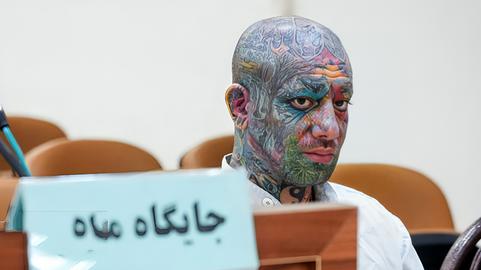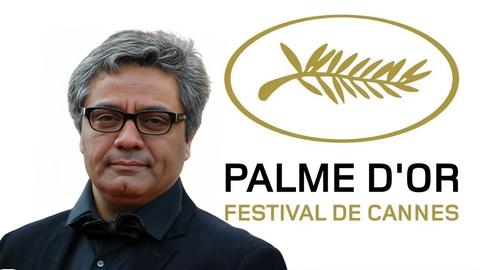FIFA normally only demands a host nation provide eight venues for the World Cup, although it recommends 10. Brazil has provided 12. The reason is clear: politics. There will be four venues in the north, not an area particularly noted for its love of football. Brasilia will get a 70,000-seater stadium even though it doesn’t have a top-flight football team to play in it. And Cuiaba, the capital of Mata Grosso, with no professional side, will have a 42,000-capacity stadium hosting four group games. None of it makes any sense, or at least it wouldn’t if you didn't consider that the north is the political heartland of Lula, the former president of Brazil who was so central to winning the bid to host to 2014 World Cup; that Brasilia is the national capital and so needed to be thrown a sop; and that Blairo Maggi, the governor of Mato Grosso, and the nation’s largest producer of soya beans, is a major donor to Lula’s Workers’ Party.
Politics has played its part, as it does everywhere, and as it always has in Brazilian football. Brazil, in a sense, is football: nothing has been more important in generating the nation’s self-image and self-esteem. Brazil is the fifth-largest nation on earth, both by land area and population, statistics that mean, as David Goldblatt points out in his new book Futebol Nation, that in terms of an influence on the global culture it punches significantly below its weight. No Brazilian, to take just one metric, has ever won a Nobel Prize. It’s only in football that it has really excelled. Brazil has won five World Cups, more than any other nation. And it is by some margin the world’s greatest exporter of players. The vast sums paid by Nike to produce and market the famous yellow national shirt show what a powerful global brand Brazilian football has become.
As is the case with many South American nations, football was the foundation on which Brazil was built. In a new nation, one formed of an uneasy mix of immigrants and indigenous cultures, pretty much the only thing that Brazilians had in common was their support of the national football team. That’s why the playwright Nelson Rodriguez said that Brazil’s defeat to Uruguay in the final game of the 1950 World Cup was “our Hiroshima”. The comparison is tasteless, but his point was that this loss weighed on the Brazilian psyche like a national tragedy. The World Cup was supposed to be the consecration of Getulio Vargas’s Estado Novo, the victory achieved in the Maracanã, the biggest stadium in the world and a modernist monument echoing the work of Oscar Niemeyer’s work in Brasilia. Brazil’s defeat destroyed every assumption of the inevitability of Brazilian success. So shocking was it that the white shirts Brazil had worn until then were abandoned and yellow was adopted instead.
Football had always reflected the changing social and political environment of Brazil. In the early years of the twentieth century, clubs were often organized on ethnic grounds—Gremio of Porto Allegre, for instance, was proudly German, while the Sao Paulo club Palmeiras was founded by Italians and, until 1942, was known as Palestra Italia. After Vargas, who had seized power in a coup in 1930, retained it with a pre-emptive coup in 1937, circumventing elections the following year that he was constitutionally debarred from contesting, and established the Estado Novo, he needed to legitimize his power. He lacked the charisma ever to establish a cult of personality and so sought expressions of Brasilidade, seeking, as Goldblatt has put it, “to mobilize and shape the nation’s popular cultures for nationalistic ends.” Portuguese was imposed as the national language which, along with a general antipathy towards Germans and Italians after the Second World War, eroded the ethnic identities of many clubs. The 1950 World Cup was the centerpiece of that policy, and aimed to create a sense of national unity.
Vargas committed suicide in 1954 in the face of a threatened coup. Juscelino Kubitschek, who was elected to replaced him, was just as aware of the propaganda potential of football and the state invested heavily in the 1958 World Cup campaign, which was hosted by Sweden. The government did everything it could to give Brazil as good a chance was possible of winning: the squad underwent extensive medicals, for instance, while 25 venues were scouted as potential training bases in Sweden before one was chosen.
Then, of course, came the emergence of Pele, and the birth of the popular conception of the Brazilian game, all fluid passing and individual flair. They won that World Cup, and the next one and, after being physically bullied in 1966, returned to win again in Mexico in 1970, producing three weeks of football that enraptured the world. The Jornal do Brasil compared Brazil’s 4-1 victory over Italy in the final to the moon-landing the previous year, and, as Goldblatt points out, in the sense that this was a triumph for all humanity, a glorious fusion of art and science watched – thanks to satellite television – all around the world, the comparison wasn’t entirely fanciful.
For the military government that had taken over following a coup in 1964, the victory was an enormous stroke of luck and one it was quick to capitalize upon: “I identify the success...,” said General Emilio Medici, “with intelligence and bravery, perseverance and serenity in our technical ability, in physical preparation and moral being. Above all our players won because they knew how to... play for the common good.” Once football had fallen into the hands of the generals, it would never fully escape. The military had appointed technocrats to oversee the economy and they appointed technocrats to run sport.
Although the world continued to imagine Brazilian football represented the same values as it had in 1970, from the 1970s onwards it became far more pragmatic, concerned with physicality and elements that can be measured – kilometers run, passes completed and the like—than with the artistry of Tostao, Rivellino and Jairzinho. With the national side, there was a brief return of the old style in 1982 and 1986, when Socrates, who insisted his club, Corinthians, was run on democratic lines, was captain, but o jogo bonito, the beautiful game, has essentially been a marketing myth for 40 years.
Just as fallacious is the idea that Brazil is a country universally in love with football. It’s not just the protests that have attached themselves to the World Cup: there’s a real apathy about the domestic game. The average attendance for a top-flight match is under 15,000: around 50 percent lower than in Argentina, lower even than the English second flight. In part the issue is the dire lack of organization. In 1971, the government introduced a national championship to run alongside the state championships to try to promote a sense of unity, but for years it was a bloated farce, beset by mystifying regulations and a habit of fiddling promotion and relegation for political ends. By the 1990s, hooliganism was rife and attendances had dropped to shocking levels.
The journalist Tim Vickery, in a provocative piece in The Blizzard, made the case that what Brazilians really like is not so much football, but rather what it represents. It is, he said, “a powerful mechanism for subverting traditional hierarchies. The gifted individual player is the pawn who becomes king. He can be indulged beyond all European understanding. Normal rules do not apply. And when he does a little shimmy and an opponent clumsily falls to the ground the roar from the crowd can be almost as loud as a goal. Even if the opponent is quickly back on his feet and doggedly performing his marking duties, he has been publicly humiliated for that split second — a hugely significant moment.”
Football can be a powerful took for raising self-esteem. But that means that what is prized is victory. That can be defined either by the humiliation of an individual opponent or, increasingly since the days of the dictatorship, by winning matches. Which raises the question of what might happen if Brazil don’t win. When Lula won the right to host the World Cup, it seemed like a tremendous propaganda coup, a great chance to project Brazil to the world. If she has to deal with the consequences of defeat, his successor, Dilma Roussef, may be less convinced of the benefits. Football in Brazil has always been a political event.
For further coverage of the World Cup, see:
“Iran Can Beat Any Team in the World”: Interview with Ciro Blažević
Nigeria’s Front Line: A Challenge for Team Melli

































comments